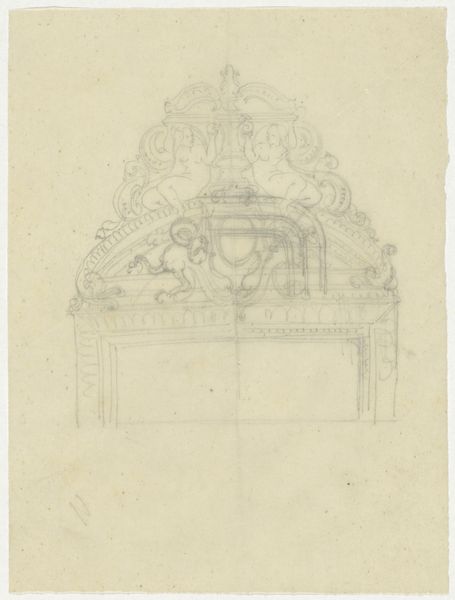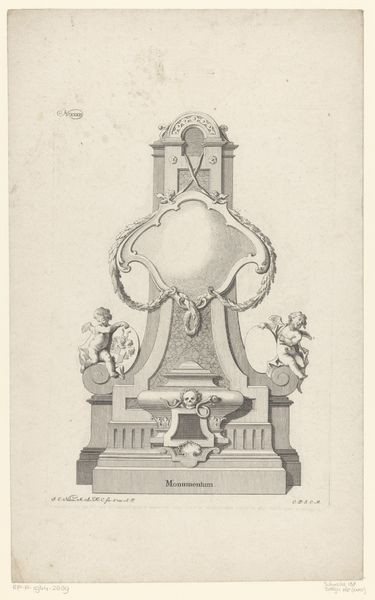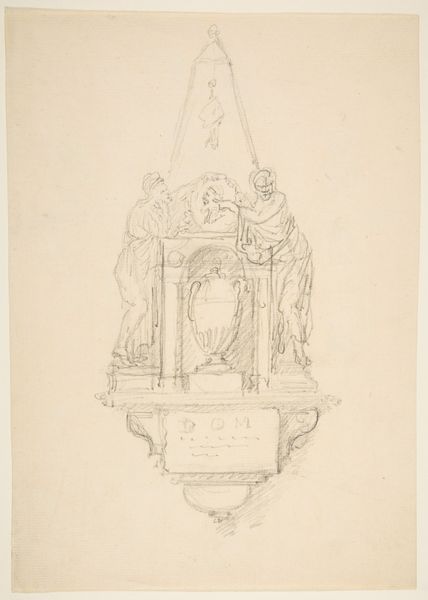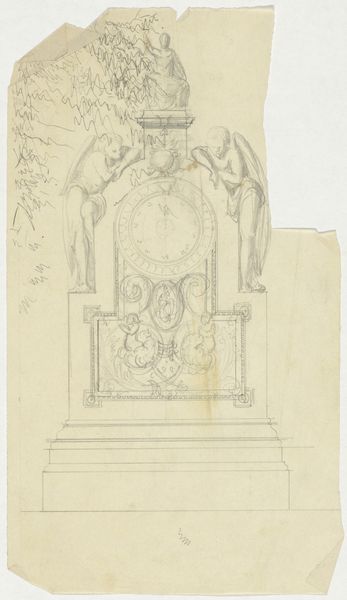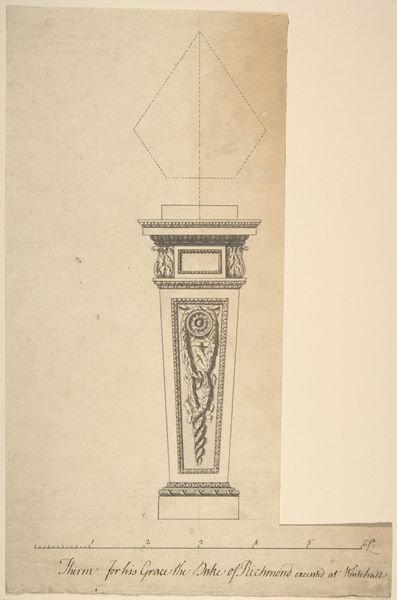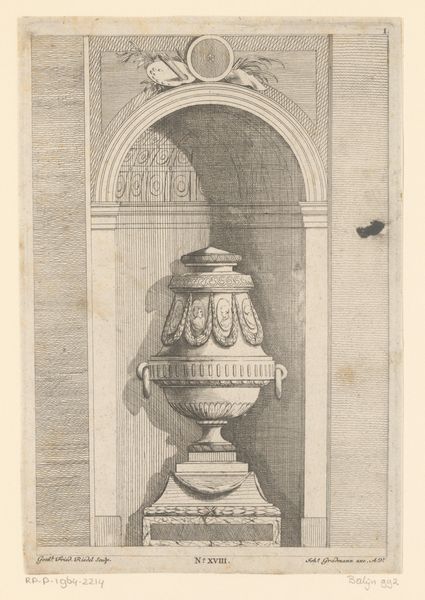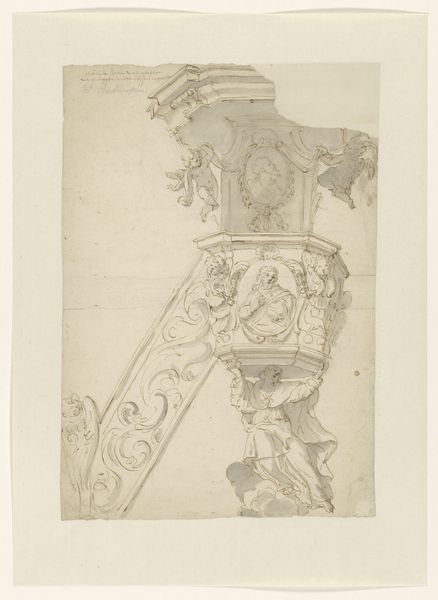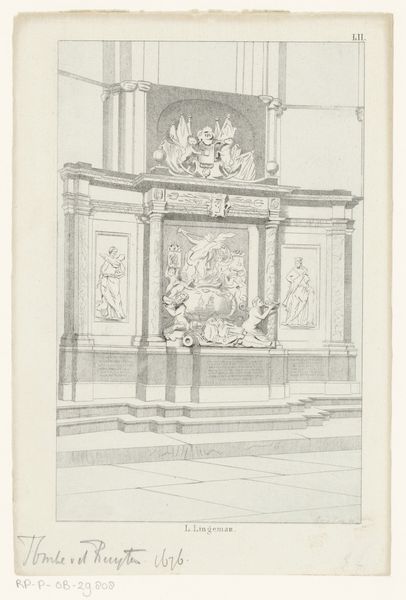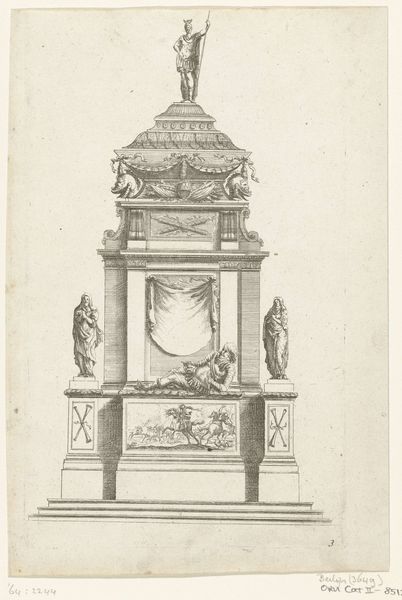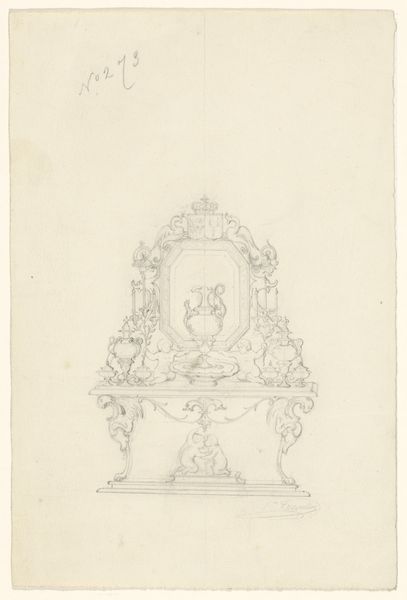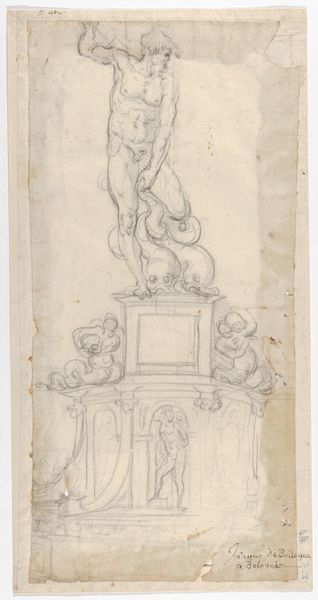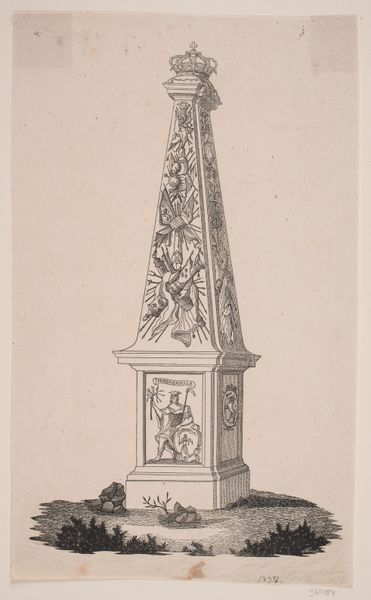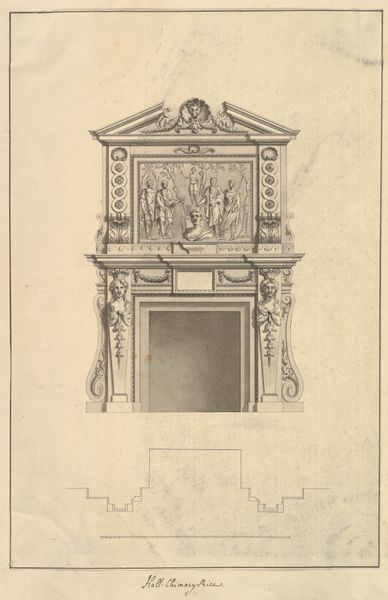
Front-aanzicht met plattegrond en zij-aanzicht van grafmonument 1672 - 1752
0:00
0:00
drawing, pen, engraving, architecture
#
drawing
#
baroque
#
pen
#
engraving
#
architecture
Dimensions: height 362 mm, width 213 mm
Copyright: Rijks Museum: Open Domain
Curator: This is Daniël Marot’s, “Front-aanzicht met plattegrond en zij-aanzicht van grafmonument,” a design for a grave monument, dating sometime between 1672 and 1752. Editor: My initial impression is one of cool formality. The gray hues and architectural precision give it a very stately, if somber, feeling. It looks like it was designed to project status as much as commemorate the dead. Curator: Absolutely. Marot was instrumental in introducing French Baroque style to the Netherlands and England, and his designs, including this one, served to amplify the power and prestige of his aristocratic patrons. Consider the inclusion of putti and laurel wreaths, each detail echoing power and influence. Editor: Looking closely at the renderings, the proposed monument seems to be largely constructed from marble, with what appears to be precise engraving to create texture, especially for the depiction of veining. Were such grandiose monuments actually made from precious material, or was it often just a facade? Curator: Typically, yes, the actual monument would’ve been constructed from similar high-end materials. Displaying wealth and influence through architecture—even funereal architecture—was a key element in baroque culture. And, of course, this engraving itself operates as a powerful means of communicating those class distinctions in an increasingly public visual culture. Editor: It makes me think about the laborers involved in quarrying the stone, shaping the marble. Such craftsmanship involved significant exploitation of skilled artisans to create this object which serves as both an art piece, and a political or social emblem for an elite individual. Curator: It is quite a potent object, representing, among many things, how cultural values get concretized in stone—literally—and then circulate in images. This one speaks to both the celebration and the commemoration of status during the Baroque era. Editor: Ultimately it forces us to examine the complex dance between artistic expression, skilled production, and social position that continues to inform our material world.
Comments
No comments
Be the first to comment and join the conversation on the ultimate creative platform.
